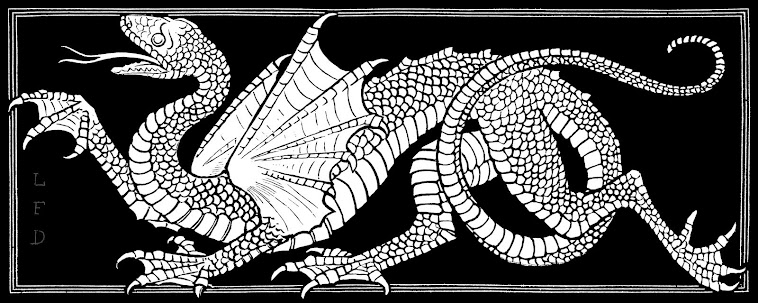Reading through Appendix H: Tricks in the DMG last night, though, something clicked and I think I have a better grasp of tricks now. As I type this out, it feels like I'm stating the obvious, but if I couldn't figure this out 24 hours ago chances are good that this could be helpful to at least one reader. Obviously, this is a new way of thinking for me so it probably has some holes. Criticism and examples that aren't included in this theorizing are welcome.
Tricks fall into two broad categories:
1. Tricks that are merely an empty room, monster, trap or treasure masquerading as a different one of those options; for example, an animated statue coated in yellow mold waiting for adventurers to come into range. It's a nasty monster masquerading as golden treasure.
2. Tricks that aren't masquerading, that aren't, when boiled down, really just an empty room, monster, trap or treasure. They may include those, but they aren't just that.
These "type two" tricks follow this formula:
1. There is an item. This could be an architectural feature, like an arch or doorway, a fixture, like an altar, fountain or pedestal, or a "free-floating" item, like a ball or futuristic alien device just lying on the floor of a room.
2. There are one or more ways to interact with this item. Personally, I think that it is more fun the more ways there are to interact with the item; one important facet of items with multiple ways to interact with them is that some of the ways to interact with them may be less obvious than others. Examples of ways to interact with items include touching and throwing, talking, casting spells or projectiles at or through them, offering something to them, attacking them and "messing" with toggles, switches, levers and buttons on them. Interacting with the item in multiple ways in a particular order may count as a separate way to interact with the item.
3. There is then a deciding factor that will connect the method of interaction with the result. This deciding factor might be the particular way the item was interacted with, a roll on a die or some mixture of both. For the simplest of tricks, this is just whether the trick is interacted with or not.
4. Finally, there are the results. These might be bad, good or not obviously one or the other. Complex tricks with lots of results (some good, some bad, some hard to nail down) are possible (and fun!) but the simplest tricks have just one result. Here are some categories of results; if you can think of others, please comment about them:
- Changes to Characters: Whether attribute scores, sex, facial hair or size, something changes.
- Access/Transport: Characters may or may not get a choice about this access or transport. Examples include teleportation, trap doors, chutes, slides and plain old secret/locked doors opening.
- Treasure: The characters are rewarded with treasure.
- Monsters: The characters are faced with an encounter.
- Trap: The characters are faced with harm.
- Resources: The characters get something that helps them attain some other goal, whether killing monsters and getting treasure or a plot or exploration-related goal, from information like a clue or treasure map to physical tools like keys or mirrors, to consumables like torches, food or even wishes.
- Changes to the Trick: Interacting with the trick changes it; it may disappear or stop working, become another item, such as treasure, or new ways to interact with it may become possible.
So, what do you think? Is this all so incredibly obvious that it wasn't worth posting? Am I missing something? Is this helpful? Would random tables for each of these components, organized in this specific way, be a helpful addition to the trick resources out there? What other trick resources have you found helpful?

